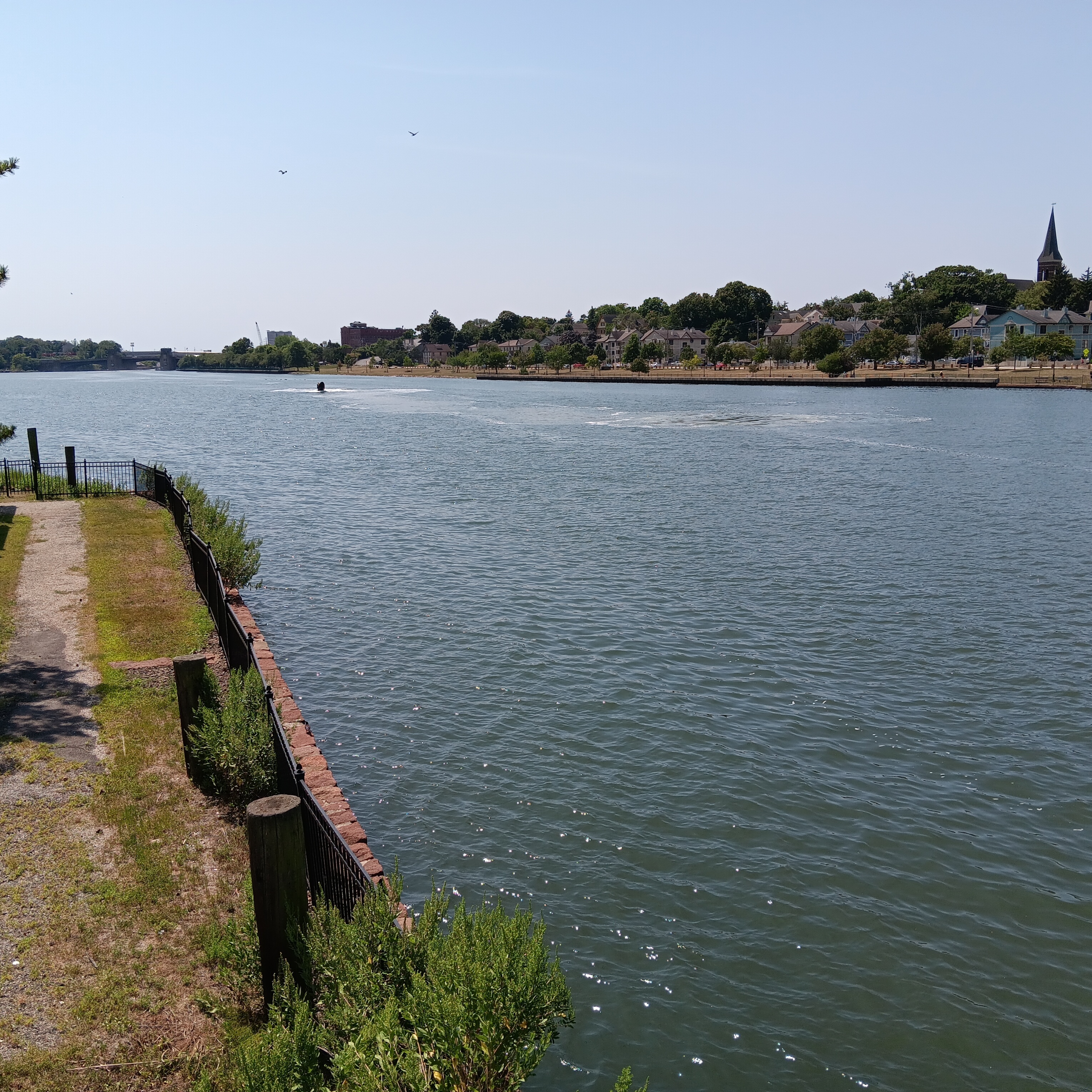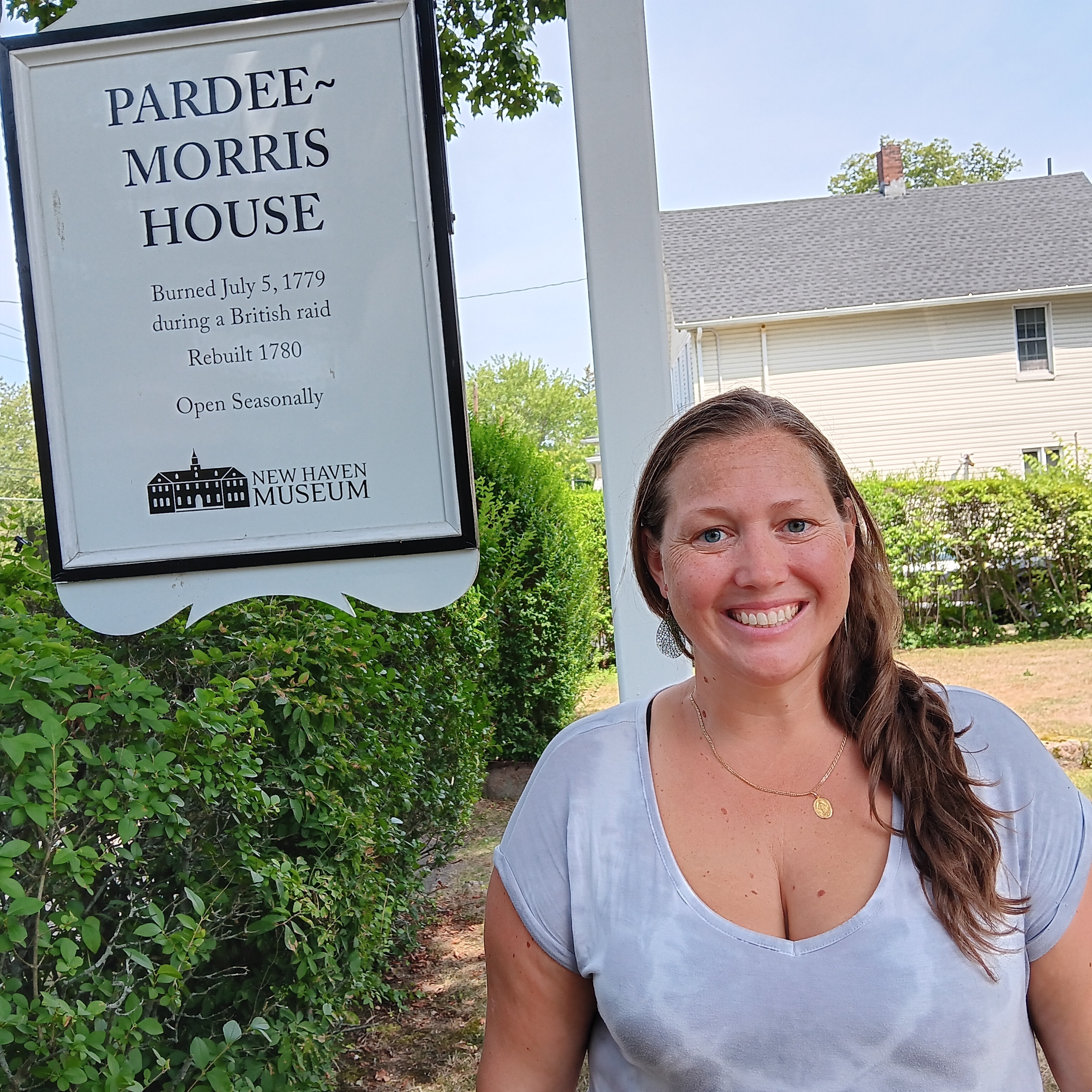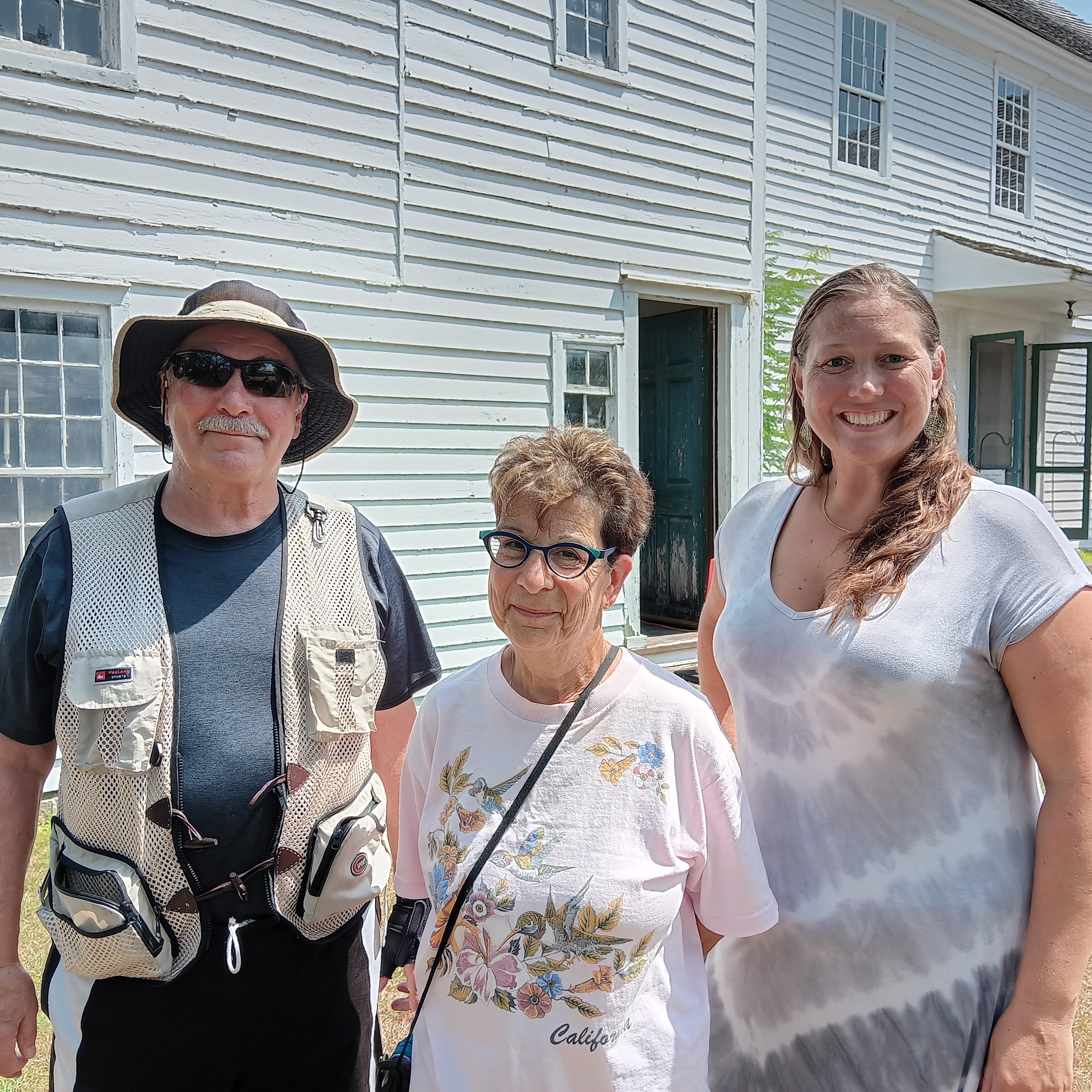
Allan Appel Photos
The Quinnipiac RIver looking south from Grand Avenue Bridge.

Professor of biological and medical sciences Courtney McGinnis.
More than ten years ago, Courtney McGinnis was an associate professor of biology at Quinnipiac University and on a team of faculty and student environmental sleuths.
They were looking for the source of phenothiazine in the Quinnipiac river, along with assessing the possible presence of phthalates — toxic effluents — used in making certain plastics, which were detected running into the Quinnipiac River between Wallingford and North Haven.
She and her mentor Prof. Harry Pylypiw found it — by the Toelles Road near the Wilbur Cross Parkway – and stopped it.
Now, roll the clock ahead a decade (Pylypiw died in 2023), and McGinnis is an interim dean at the school and a professor of biological and medical sciences.
And she’s leading a new team — as well as crews of volunteers — continuing to gather data on the health of the waters as well as cleaning up toxic-effluent producing trash sites along the Quinnipiac River, especially in North Haven.
Only now the culprits she’s searching for, through grants from the Quinnipiac River Fund at The Community Foundation for Greater New Haven, are PFAS, ominously referred to as “forever chemicals,” because they break down alarmingly slowly over time.
You find them, she said, “in Teflon, in fire-retardant foams, and in lots of outdoor and water-proof gear” that most of us have in the closet and use regularly.
Sunday in the sunny afternoon beneath a white tent, McGinnis shared her data and her views on the health of the river with two dozen people who gathered on the lawn of the New Haven Museum’s Pardee-Morris House on the East Shore as part of the museum’s regular summer Lectures and Talks series.
“My working hypothesis is that these too [PFAS chemicals, like the phthalates studied previously] interrupt the endocrine signaling” and damage living things in this manner, she said.
Twelve times a year and at 13 locations along the Q River, from Hanover Pond in Meriden down to behind the Target store off Universal Drive in North Haven — where the Quinnipiac, grand by the time it reaches Front Street in New Haven, is hardly more than a piddling stream — McGinnis and her research students sample the Q River.
She takes them back to the lab at the university; samples are analyzed on a GC-MS, which runs similar to a distilling mechanism and allows for the detection of chemical imprints within the water sample.
The PFAS findings, along with the presence of E.coli and other bacteria are, unsurprisingly, “higher in the period after October because from mid May to October,” she said, “Wallingford’s treatment plant is working to disinfect outflows.”
“We showed that there’s more [bacteria and problematic chemicals] when not treated. And I hope our work will result in more treatment,” that is, a policy change.
Paul Caron grew up in Fair Haven, and is now in his late 60s. He recalled fishing, crabbing, and swimming in the Quinnipiac (for decades the state D.E.E.P. has continued to describe the Q, along with New Haven’s other two rivers, the West and the Mill, as “impaired,” that is, not safe to swim in). Caron queried when the serious phthalate and PFAS pollution began.
“With Dupont in the 1940s,” McGinnis replied, “when Teflon was created,” and from that time on a gazillion other products.
Serious attempts to test and to clean up began in 1987 when the Upjohn company, in Wallingford, was sued for releasing pollutants into the Q River beyond what it was permitted to do. Creating the initial funds of the Quinnipiac River Fund at The Community Foundation for Greater New Haven, which for ten years has supported McGinnis’s work, was a condition of the settlement.
“They’re already in all of us,” she said about these chemicals. “And there are hundreds of them.”
Yet she allayed, or tried to allay, the anxiety of her listeners by citing a toxicologist’s maxim: “The dose makes the poison.”
That is, there’s insufficient data yet to know what’s a safe level, and McGinnis’ work in the Q is part of wide-ranging studies all over the place to figure that out.
She experiments with fish and worms to study these organisms’ response to the PFAS chemicals and at least with these subjects, the results appear to bear out her hypothesis that the danger is in their endocrine-blocking effect.
That is, through triggering abnormal estrogen and testosterone-like flow that result in abnormal development of these organisms.
When an audience member asked for an example, McGinnis cited a shellfish study done by a colleague — not at Quinnipiac — that showed some mollusks exposed to PFAS exhibited female genitalia superimposed on the male genitalia.
Beyond the critical testing and the clean-ups she organized, McGinnis was asked if she’s involved in mitigation.
“I’d love to say yes, but I haven’t been able to.”
That involves environmental engineering, she explained, and it’s both a different department in her school as well as involving municipalities in infrastructure changes.
Such as what? asked another audience member. “What would mitigation look like?”
“Maybe a screen system,” she said. “It’s done elsewhere, to run the water through infrastructure toward the banks where it’s run through screens” that help to remove the chemicals is one approach, she said
Yet, to end, with some optimism, she noted the Quinnipiac ecosystem is rich in “natural remediators,” that is cleaners of the waters. They include the extensive wetlands and tributaries and streams that run from above Wallingford down to New Haven Harbor.
As she continues to gather data, mitigation might also result from a recommendation to the state, if it accepted the gathering evidence of her data, to urge the Wallingford treatment plant to disinfect not once, but twice a year, she added.
This article has been updated to include various factual corrections to inaccuracies this article initially contained about McGinnis’s presentation and work.

McGinnis (right) with audience members Paul Caron and Toni Criscuolo.